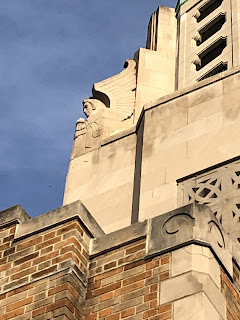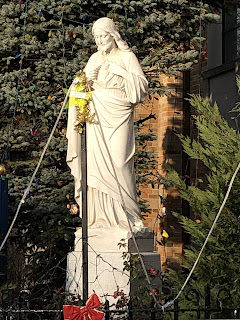Jackson Heights is five to six kilometers from my apartment. I have ridden through it, many times, along various routes. Still, a ride can lead me to some interesting corner or structure I’d never seen or noticed before.
This is one such building. At first glance, it doesn’t seem out of place: Like most of what is now in the neighborhood, it was built during the late 1920s: around the same time as the Empire State and Chrysler Buildings. Also, many palatial movie theatres were constructed during that time, just when movies were becoming the most popular form of popular entertainment. So it would be easy to take this building for a Loews or RKO cinema, especially when you look up.
Those “movie houses” often combined the line structures and geometric shapes of Art Deco with Egyptian motifs. They sound like an odd pairing until you look at them—and you realize that Howard Carter discovered King Tutankhamen’s tomb in the early 1920s, setting off a fad for all things Egyptian just as Art Deco was becoming the most influential style in architecture and design.
That is why this building doesn’t look out of place in Jackson Heights and would look right in parts of the Bronx or Miami Beach, which were also developed around the same time.
What makes this building so unusual, is this:
I grew up Catholic and have entered all sorts of church buildings and cathedrals here, in Europe and Asia. I can’t say, however, that I’ve seen any other Catholic Church building—or, for that matter, any other house of worship—that looks quite like this one.
And to think: I came across it just because I decided to make a turn, and ride down a street, I hadn’t before. That is one of the joys of cycling!








